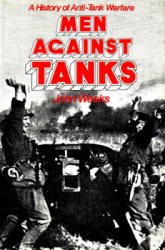Was appointed as the first US Secretary to the Combined Chiefs of Staff and in September went to England as Eisenhower’s cos in the European Theatre of Operations. He remained with Eisenhower for the rest of the war, becoming cos at the Supreme Headquarters Allied Expeditionary Force (shaep") for the Normandy invasion and the Northwest European campaign. Pugnacious and quick-tempered, but also extremely efficient, he made a vital contribution to the Allied war effort. PJS.
Smith-Dorrien, Gen Sir Horace
(1858—1930). Br. Smith-Dorrien, who was Goc Southern Command at the outbreak of World War I, took over II Corps of the bef upon Sir James Grierson’s death on August 17 1914. Less than a week later, on August 23, II Corps bore the major share of the fighting at the Battle of Mons. Having successfully disengaged, Smith-Dorrien decided, contrary to Sir John French’s wishes, to make a stand at Le Cateau on August 26, feeling that his troops were too exhausted and the Germans were too close to risk further retreat that day. His decision was justified for, despite 7,812 casualties, the action at Le Cateau led to an easing of pressure on II Corps but, thereafter, relations between Smith-Dorrien and French steadily deteriorated. This was not immediately apparent as, following the operations on the Marne and Aisne and at Ypres, Smith-Dorrien became commander of the Second Army in the December reorganization of the BEF. However, he was blamed for the failure of a diversionary attack near Mount Kem-mel in March 1915 and matters came to a head during the Second Battle of Ypres when Smith-Dorrien suggested falling back to a more tenable line close to Ypres itself. French refused and gave Second Army to Plumer, relieving Smith-Dorrien on May 6 1915. This was Smith-Dorrien’s final field command and the bef thereby lost the services of an able tactician. Ironically, Plumer’s first task was to withdraw, just as his predecessor had proposed. PJS.
Smolensk, Battles of (1941 and 1943). Smolensk’s central position
On the main Moscow highway ensured that the city and the region around it were vital objectives during the German invasion of the Soviet Union in June 1941. Field Marshal von Bock’s Army
Group Centre advanced through Belorussia, bearing down upon Marshal Timoshenko s West
Front. Vitebsk fell on July 9 and Guderian’s Second and Hoth’s Third Panzer Groups raced towards Smolensk, cutting off whole Soviet armies. In reply,
Timoshenko mounted several
Counter attacks but, by the end of July, a large body of his command had been caught in a pocket around Smolensk. Soviet losses included 3,000 tanks and 300,000 men taken prisoner. The delay imposed upon the German advance was to prove crucial and Zhukov, the recently appointed commander of the Reserve Front, gained valuable time to prepare the defence of Moscow. Two years later the roles were reversed and Army Group Centre fought desperately to contain the 1943 Soviet summer offensive. Sokolovsky’s Western Front began its attack on August 7 but even when joined by Yeremenko’s Kalinin Front, the advance eventually stalled. Throughout the rest of the month, the Red Army battered its way through strong German defences until, on September 15, the battle reached its final phase and, on the 25th, the last German units were driven out of Smolensk. While the battle had proved to be costly for the Soviet forces, the Red Army could withstand such attritional tactics far better than the Germans with their limited resources of manpower. MS.
Smuts, Field Marshal Jan Christiaan (1870-1950). South African. A Cape Colony lawyer in 1899, Smuts sought to avert the Second Boer War by negotiation with the British. In 1900 he joined De La Rey on commando in the Transvaal, and in 1901-02 headed a guerrilla force in Cape Colony, skilfully evading British columns but failing to stir up general rebellion. As Botha’s major supporter, he helped negotiate the peace treaty of Vereeniging, May 1902. With the establishment of the Union of South Africa, 1910, he became Premier Botha’s Minister of De-
Fence, laying the foundations of South Africa’s armed forces.
In 1914 Smuts greatly assisted Botha in the suppression of the pro-German revolt led by De Wet. He was Botha’s second-incommand in the German South West Africa campaign, 1915, and in 1916 was Imperial c-in-c during the East African campaign. In January 1917 he went to London as South African representative in the Imperial War Cabinet; coopted into the British War Cabinet by Lloyd George, he produced the “Smuts Report”, August 1917, influential in the foundation of the RAF as an independent service {see the essay the emergence of air POWER, pp. 195-197). Postwar, he was a leader in the creation of the League of Nations.
Smuts succeeded Botha as Premier in 1919, but his advocacy (following Cecil Rhodes) of South Africa’s expansion into a great multi-racial (albeit White-dominated) African state within the British empire alienated many Afrikaners, and in 1924 he was unseated by the Nationalist Party of Gen James Hertzog (1866-1942). Forming a coalition with Hertzog in 1933, Smuts became Deputy-Premier: in September 1939, when Hertzog favoured neutrality.
Smuts won the crucial debate that regained him the Premiership and ensured South Africa’s vital contribution (especially in the East and North African and Italian campaigns) to the Allied cause. During World War II, , Smuts (created Field Marshal, 1941) was a valued adviser to Churchill and the War Cabinet, attending the Cairo Conference, 1943. He
Assisted in the drafting of the United Nations Charter at the San Francisco Conference, April-June





 World History
World History









